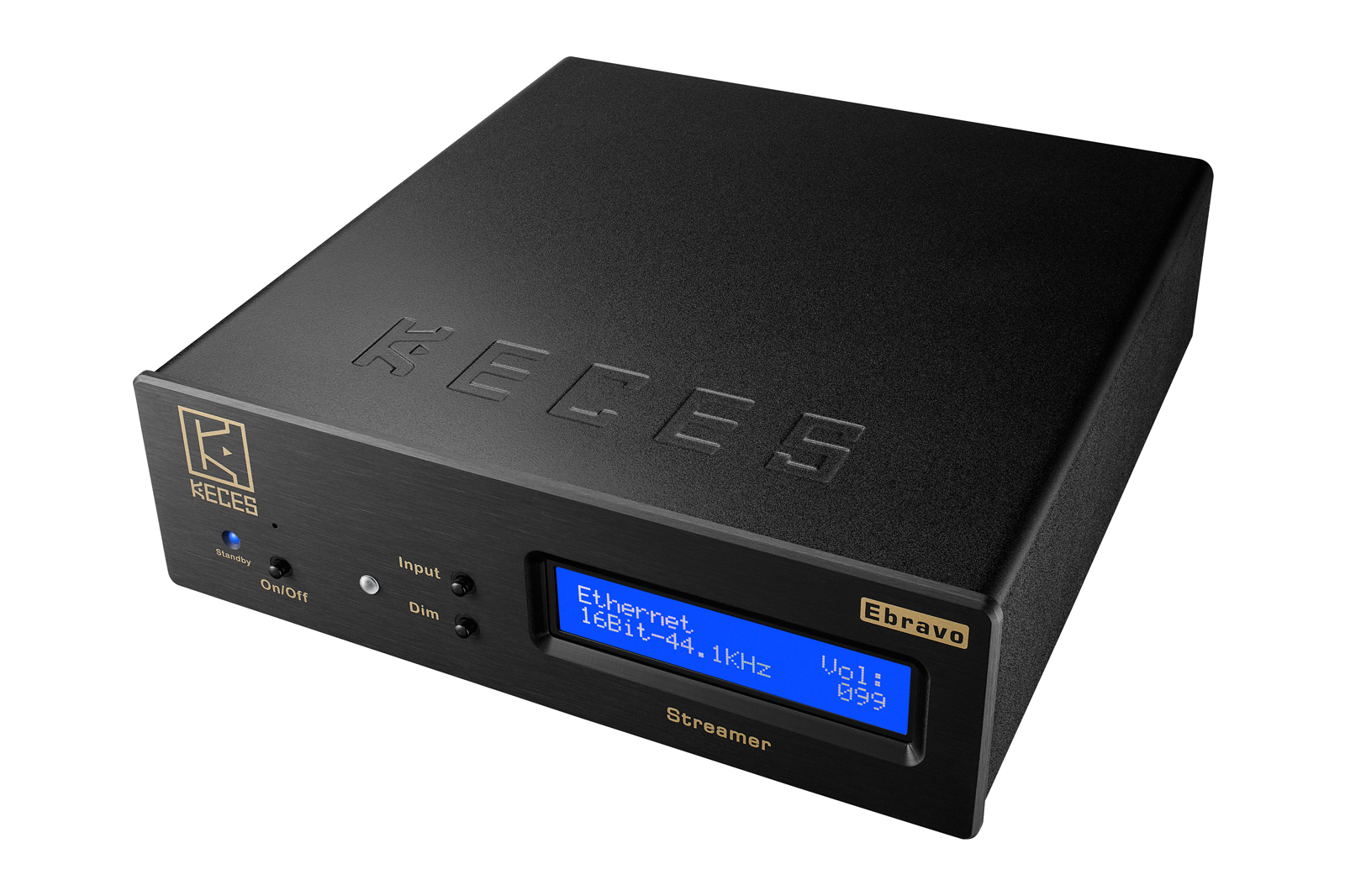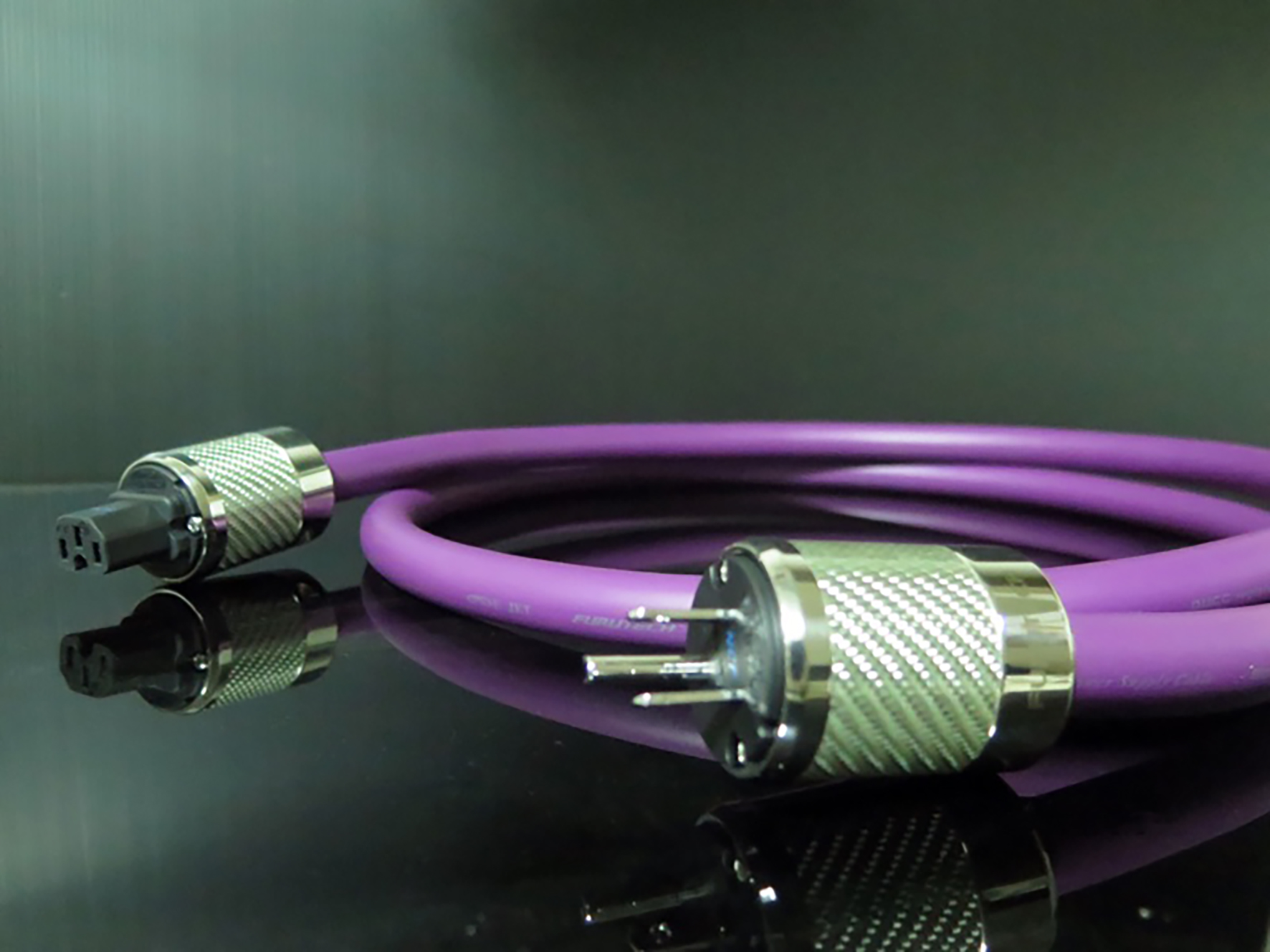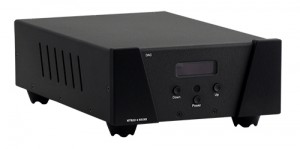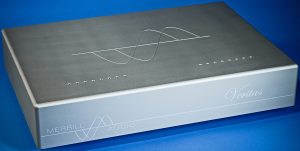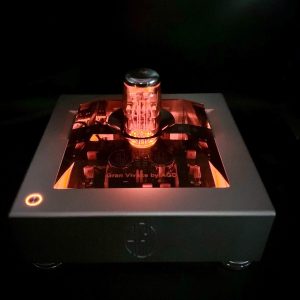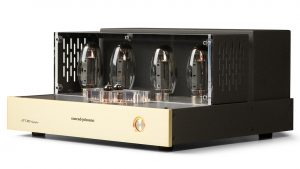
Thank goodness for Michael Mercer. While other Positive Feedback writers cover headphones, DACs, and amps (Warren Chi, Bob Levi, and our editors spring to mind), nobody proselytizes from the headphone pulpit with as much relentless enthusiasm as monsieur Mercer does for this publication and on his website, Audio360.org. And there's a need to keep the momentum going, judging by a few comments I heard at a recent audiophile society event. "Headphones are a frickin' fad!" says one, and "No thanks, I'll keep my Lowthers, and save my money for new music," lectures another. It's a curious thing, this hobby of ours, a frantic search for the newest thing countered by an equally determined fear push to reject it all. But Mercer's definitely onto something...
For most of my life, I've shared the audiophile El Dorado quest for the ultimate sound system, a breathtaking monument of materials and engineering, dominating the listening space and commanding adulation from awestruck family, friends, and others caught in my audiophile personality cult. Not so much a machine for making music as an unfathomable force of nature, my carefully assembled pantheon of components would infuse hi-fi ecstasy at the sub-atomic level for all listeners within its dominion. All hail the System of Undying Praise!
Alas, it hasn't exactly turned out like that. For one thing, most of my family and friends couldn't care less about sound quality enlightenment. My wife listens to her music on her phone (not with headphones, just the phone!), and politely ignores my cajoling to switch to the home system. Besides, Systems of Undying Praise need ample space and cash to come into being, neither of which are found handy around my shack. Thank goodness, then, for the discovered delights of headphone audio, with its wide range of great sounding, fit anywhere products offered at relatively affordable prices. One thing I'm finding out, however, is that everything you know about traditional audio applies exponentially to headphone listening. Amps, cables, speakers, they all make a titanic difference when they sail into your eardrums, so it pays to explore and pay for improvements. To that end, I decided to investigate what a thousand dollars or so can get you from a company well-known for its admirable business ethos and production of highly respected headphone amps and DACs, Schiit Audio.
Schiit Audio does much to convince the world that they're the everyman's headphone audio company. Touting a five year warranty for every product, built to last "heirloom quality" durability, and Made in the USA pedigree, it'd be easy for cynics to cue the Bob Seeger soundtrack and snobbishly dismiss Schiit products as being Chevy Tough, but less refined than their European and Asian competition. That rugged individualism mantra, however, belies the fact that Schiit products are, in fact, esoteric, intelligently designed high end products for those willing to pay for premium sound. Obviously, outsourcing is cheaper and easier for most companies, and I admire that Schiit doesn't do this because, well, they just don't want to. Having heard their balanced Mljolnir amplifier with a pair of Audeze LCD-X headphones and WyWires headphone cable at a recent well-attended Head-fi event, I can tell you that this combination was on par with anything there, regardless of price. So it was with no small excitement that I first opened the box containing the new Schiit Lyr2 High Power Tube Hybrid Headphone Amp and Preamp. Adding to the fun, a few days later, I was unpacking a suitable partner for the Lyr2, the Bifrost Uber DAC. The Lyr 2 and Bifrost Uber USB DAC ($449 and $519, respectively) require an outlay that is twice what you might pay for the ADL X1 headphone amp/DAC reviewed here previously, and five times what you would pay for any number of miniature USB headphone amp/DACs currently flooding the market. As often occurs in audio, and definitely in the headphone market, the question is, "Do you really need to spend the extra money, given the cheaper options?"

Schiit Bifrost Uber USB DAC
All I can say is, the Schiit combination sure makes a compelling case in the affirmative. The great thing about headphone amps and DACs is that you can fit them all on a decent sized card table and switch out to your heart's content. Although I made plenty of on-the-fly headphone substitutions with the ADL H-118s and Sony MDR 7520s, ultimately, I settled on a pair of superb sounding Final Audio Design Pandora Hope VI headphones. I compared the Schiit combo with other headphone amp/DAC solutions. Travel size contenders included the Light Harmonic Geek Out, CEntrance DACport LX, the aforementioned ADL X1, and the Devilsound DAC v2.1. The larger amp/DACs used included the Audioengine D2 and Peachtree Audio iNova integrated.
A case could be made for any of the travel DACs, of course. The Devilsound still sounds great and is a bargain used, but it can no longer can keep up with the newer technology of the others. The Geek Out delivers remarkable detail and controlled bass. The definition and weight of the CEntrance DACport makes it one of the DACs I use most often. The Peachtree iNova DAC is livelier and more immediate than the Geek Out and the X1, but at the cost of sounding harsh on occasion. The Audioengine D2 is reliably sweet sounding and pleasing, while the ADL X1 is an all around winner, and is certainly my favorite portable option.

Schiit Valhalla 2
The Schiit Lyr2/Bifrost Uber DAC combination, however, is a whole ‘nother conversation altogether. One of the drawbacks to writing this column is that I've killed off perfectly good songs through excruciatingly repetitive analysis on countless systems. Nora Jones's "Come Away With Me" is just one of those victims. Every DAC auditioned here imparted obvious differences to the song: shaded piano tonal character, muted vocal depth, limited resolution of guitar amp distortion, to name just a few elements. Playing the Nora Jones song––and many others––the Lyr 2 and Bifrost Uber DAC simply bests the competition in every aspect that matters. The Schiit opened the soundstage dramatically to fill the headphones with space and sound, as if the musicians stopped playing in the backstage waiting room and started again on the stage. Given more room to breathe, the instruments in the Nora Jones tune acquired more body, and her voice was both fuller and more balanced overall.
Playing the newly remastered 96kHz/24-bit version of Led Zeppelin II, the Schiit Lyr2/Bifrost Uber DAC combo delivers the hammer of the gods right between the ears. So what does Schiit give you for twice the price of the competition? Well, playing headphone ambrosia like "What Is And Should Never Be," you'll get Jimmy Page power chords that'll sound like his Les Paul and not some kid's Epiphone. Bohnam's drums may not be as controlled as you'll find in comparable solid state design (or Schiit's tubed Valhalla 2), but who cares about that when the Schiit combo delivers percussion with such explosive space and texture? Finally, the Lyr2/Bifrost sound is the perfect fit for the swirling stereo exchange of slide guitar licks panning left and right and ending in Plant's center stage (naturally!) vocal consummation. Stunning! Definitely worth every penny.
It's one thing to rock the classics, but classical music is where premium headphone rigs scale to heroic heights... or sink into to the reeking mire of audio failure (and that's a lot of pressure for a handful of plastic and aluminum!). Admittedly, I merely dabble in the classical genre––too many liner notes and mercurial metadata for me––but classical music sounds so good with headphones, resist I cannot. For dilettantes such as I, the Linn Records Super Audio Samplers are a godsend. Timeless masterpieces, distilled into four minute ADHD (attention deficit in high definition) approved segments, all superbly recorded and offered at budget prices. Listening to a 24-bit 192kHz download of Duenedin Concert's performance of J.S. Bach's "Brandenburg Concerto No. 1 in F major" is a riot of melody and bombast, perfectly suited to the extended range and dexterity of the Schiit Lyr2/Bifrost Uber combination. For those who prize airiness and lovely tone over the umpteenth in resolution, the Schiit Lyr2/Bifrost Uber DAC is a wonderful package.
Granted, there are times when I enjoy forensic-level detail, but I've found that headphone listening soon makes such excavations a fairly wearying affair. Try listening to Jessie J, Ariana Grande & Nicki Manaj's hit single "Bang Bang" on one of those headphone operating machines and see how long you last. Played at high volume on the Schiit rig, the frenetic dance number pins me to the back walls of the club (a good thing!). Rap star Common's collaboration with Lil Herb and Cocaine 80s, "The Neighborhood" demonstrates once more why rap finds its fullest expression in a pair of headphones. With a nod to Marvin Gaye's "What's Goin' On," the song convincingly demonstrates that the Lyr2/Bifrost Uber can fill any cans with excellent bass and midrange instrumentation, while still holding together the complex panning and effect laden mix. I don't think I've ever heard The Flamingos' classic "I Only Have Eyes For You" on anything besides AM radio, but hearing it via the Pandora Hope VI/Schiit Lyr2/Bifrost Uber system simply blew me away in new appreciation of the song's marvelous production (the unrivaled vocals and timeless melody are a given).

Schiit Lyr2
The Lyr2 includes a gain switch, ensuring that it will pair well with any headphones that you may have in your collection. Use it on your desktop with a pair of powered speakers, if you like, and be happy to know that it runs very quietly. It's a tube amp, after all, so it'll run fairly warm to the touch, but the plus side is that you can enjoy the addictive and expensive sport of rare tube hunting (Schiit adds that you may, "Use 6BZ7, 6DJ8, 6922, ECC88, 2492, and many other tube types to get your perfect sound"). The stock tubes sound mighty fine to me, right off the shelf, but who am I to deny others their obsessive delights? Besides, tubes wear out, so you might want a private hoard, at that.
A word about the Bifrost Uber DAC. Years ago, I owned the first generation Bifrost and found it to be smooth, but a little too staid for my tastes. Let me say that there's nothing soft or wooly about this Bifrost Uber DAC. The music has definition and proportion, and boasts a cohesiveness that is a joy to listen to and appreciate. If you like your DACs to have bite, the Bifrost Uber still may not be to your taste, but this is an eminently musical and serious piece of audio gear, and is chock full of liveliness and detail. One caveat, of course, is that there's no DSD capability. That's no oversight, Schiit just doesn't believe DSD is worth the effort, at this point in time. To quote Schiit Audio Co-Founder, Jason Stoddard, "If DSD ever becomes more than 1% of the total music market, we will sidegrade our products to be DSD-capable, or provide another seamless way to listen to that content. The problem with DSD is that its filtering demands are very different from PCM, so you have to compromise one or the other if they share the same DAC. Not to mention that most "DSD capable" chips are remodulating DSD to a multi-bit format, rather than playing it natively (as per the recent conversation with Mytek's designer on the Audiostream site). So we're going to stay on the sidelines and see how the market develops." Fair enough, I don't think anyone would argue that DSD is a mature technology, but others––especially some writers for Positive Feedback––are likely to disagree.
Lastly, for those who are interested, I was able to convince Jason Stoddard to give me the chance of comparing the Lyr2 to Schiit's other new tube amp offering, the Valhalla 2. A quick assumption might be that, at a hundred dollars cheaper, the Valhalla 2 is like the Lyr2, only less so. At least, that's what I expected, but I was definitely wrong about that one. The Valhalla 2 is a completely different sound. An all triode design that enables you to use low-impedance headphones and offers higher power for high-impedance headphones, Schiit dares you to, "Go ahead. Do things with Valhalla 2 that you'd never attempt with other OTL tube amps. Run low-impedance headphones. Use IEMs." The Valhalla 2 also offers preamps and a gain switch, and like the Lyr2, it runs a little warm. As for the sound, Schiit states that its design goal for the Valhalla 2 is to produce sound that is, "Exceptionally accurate, neutral, and resolving, without being strident or etched." Sidestepping the debate about what is meant by neutral sound (as passionately contested in the world of headphones as it is in the audio mainstream), I can state that the Valhalla 2 delivers a tight, controlled sound. There's real substance to the notes, and, yes, it is resolving. It does not have that heightened sense of space and sweetness that one gets from the Lyr2, but it is no way Spartan or without loveliness in its own right. After a long session listening again to the Led Zeppelin catalog, I remarked to myself that this is an amp that engages you for hours on end. The Final Design Pandora Hope VI headphones sounded terrific when paired with the Valhalla 2, and I know more than a few colleagues who will prefer the more straight shooting Valhalla 2 to the livin' large Lyr2. I prefer the Lyr2 because I like audio fireworks, but I wouldn't argue with those who side with the Valhalla 2. Either way, I'd be satisfied for the money.
All three Schiit products are stellar accomplishments that should please even the fussiest headphone audio enthusiast. They are all stay at home models, of course, unless you really want to push the personal listening envelope and travel with a custom headphone board and battery pack. A strong warranty and very competitive pricing doesn't hurt, either. All three products are heartily recommended.
Schiit Lyr2 High Power Tube Hybrid Headphone Amp and Preamp
Retail $449
Schiit Valhalla 2 Triode OTL Headphone Amp and Preamp
Retail $349
Schiit Bifrost Uber USB DAC
Retail $519
Schiit Audio
http://schiit.com






